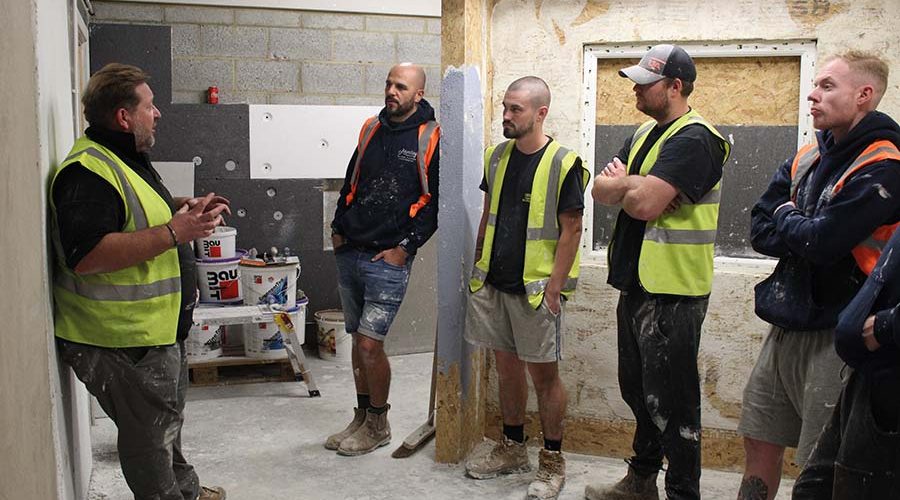Issues surrounding building competence remain an ongoing concern for the industry, writes Ben Warren,
MD at global building manufacturer, Baumit.
Baumit
Poor workmanship can lead to a range of consequences; structural failure being the most serious. Government funding has led to the founding of more than 20 on-site construction training hubs across the UK to help improve building standards. Building manufacturers are also doing their bit to address the current skills gap by implementing in-house training programmes to develop a qualified, fully-competent workforce.
Shortage
According to housing charity Shelter, more than half of buyers of new-build homes in England have had significant issues with construction in relation to unfinished fittings and faults with utilities. It’s a disquieting revelation, particularly with the UK Government pledging to build 300,000 new homes per year to tackle the current property shortage.
Substandard workmanship will take the headline blame for buildings failing to perform as designed, but the skills shortage that currently exists in the UK construction industry speaks of an overarching issue. In 2018, the Chartered Institute of Building (CIOB) revealed that the number of skilled UK construction workers had fallen to its lowest recorded level. According to the same organisation, the building industry will need to find an additional 157,000 recruits to keep pace with projected building projects.
Training is the obvious solution to ensuring a better-skilled workforce, creating a win-win-win situation for the employee, their company and their client. It needs to be said, however, that education, particularly in relation to the building sector, isn’t exclusively for the young. Even those with a construction career span as long as San Francisco’s Golden Gate Bridge should refrain from considering themselves beyond learning new tricks of the trade. After all, those who stand still commercially or personally, risk being left high and dry by the tides of change.
As the 21st-century advances, so does the breadth and capability of building products and practices. It’s not a stretch, therefore, to say only those who keep pace with industry trends and standards will remain a competitive force in the marketplace. As has been highlighted, the UK needs new housing like never before; housing that is sustainable, conforms to unprecedented levels of energy efficiency and is built in the shortest time possible. Opportunity has never knocked more loudly for those in the construction sector, but only those able to meet the required skill levels shall reap the rewards.
On course for success
Training academies, such as those set-up by Baumit, will help candidates ‘skill-up’ and meet the construction industry’s current and future demands. At our UK headquarters in Aylesford, Kent, Baumit has devised a series of external wall insulation courses for installers and applicators. Designed to cater for candidates of all abilities, the two-day course is tailored to suit individual or group needs, offering hands-on, practical learning experience with ‘real-life’ challenges usually encountered in the workplace. After completion, attendees will leave with Baumit Approved Installer status. Followed by on-site project assessments to achieve ‘Gold Approved Installer’ status. We will soon be opening an additional training academy in Doncaster, ensuring that those located in the north of the country have easy-to-reach access to training.
As part of our aftercare service, candidates who complete the course will have the ongoing support of Baumit’s technical team. It means whether you’re on-site or in the office, our experts are a reassuring phone call away to offer guidance and advice on any EWI-related matters.
Offerings such as this can be the difference between a project being completed on time and to a high standard, or it failing due to issues around seemingly minor technical details. With its training academy, Baumit has built a platform for EWI installers to stay ahead of the opposition as the industry gears-up for future challenges and change. It could also contribute to a much-needed narrowing of the construction skills gap.









